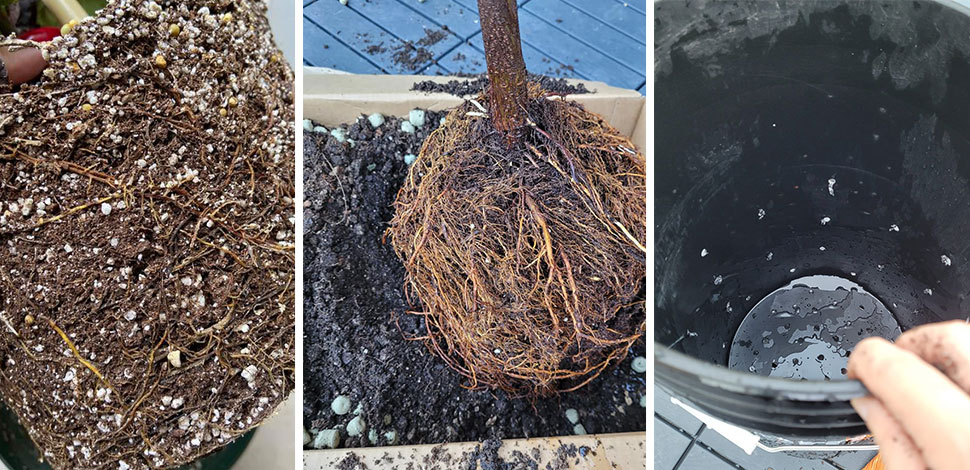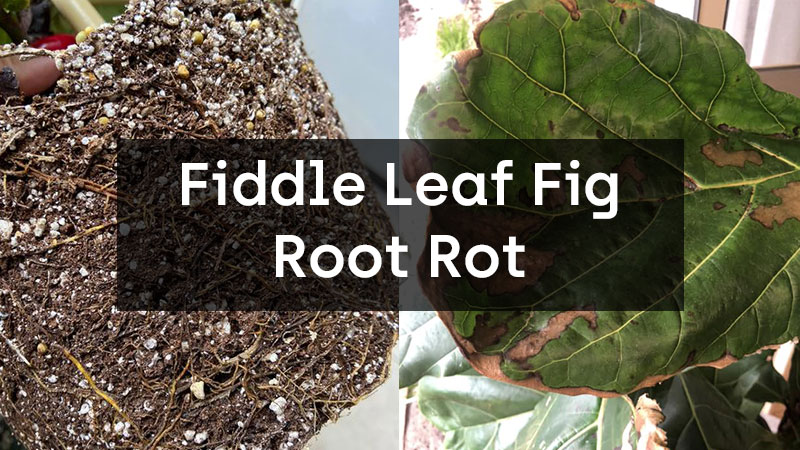Fiddle Leaf Fig plants are susceptible to root rot, a common issue that can lead to the death of the plant if not treated promptly. In this article, we will discuss what causes fiddle leaf fig root rot, how to identify it, and steps you can take to treat and prevent it.
What Causes Fiddle Leaf Fig Root Rot?
Fiddle leaf figs are native to tropical rainforests, where they grow in well-draining soil and receive plenty of water and sunlight. However, when grown as a houseplant, these conditions can be difficult to replicate, leading to the development of root rot.
The most common cause of fiddle leaf fig root rot is overwatering. When the soil is constantly damp, it can become waterlogged, depriving the roots of oxygen and causing them to rot. Poor drainage can also contribute to root rot, as can using a pot that is too large for the size of the plant.
Other factors that can lead to root rot include a lack of sunlight, poor soil quality, and cold temperatures. Fungus and bacteria can also contribute to the development of root rot, especially if the plant is already weakened or stressed.
Signs and Symptoms of Fiddle Leaf Fig Root Rot
One of the first signs of fiddle leaf fig root rot is yellowing leaves. This is because the roots are unable to absorb nutrients, causing the leaves to become chlorotic. The leaves may also become droopy or wilted, and may eventually fall off the plant.
If you suspect that your fiddle leaf fig has root rot, gently remove it from its pot and examine the roots. Healthy roots should be firm and white, while roots affected by rot will be soft and brown or black. The soil may also have a foul odor, indicating the presence of bacteria or fungus.

How to Treat Fiddle Leaf Fig Root Rot
The first step in treating fiddle leaf fig root rot is to remove the plant from its pot and gently shake off any excess soil. Trim away any soft, blackened roots using a sharp, clean pair of scissors or pruning shears.
Next, repot the plant into a pot that is only slightly larger than the previous one, using fresh, well-draining soil. Water the plant sparingly, allowing the soil to dry out slightly before watering again. If the plant is severely affected, you may need to consider cutting it back or propagating it from healthy stem cuttings.

Prevention of Fiddle Leaf Fig Root Rot
Preventing fiddle leaf fig root rot is much easier than treating it. First, make sure to use a well-draining potting mix that is specifically designed for tropical plants. Avoid using heavy soils or potting mixes that contain a lot of peat moss, which can retain too much moisture.
Water your fiddle leaf fig sparingly, only when the soil is dry to the touch. Make sure that the pot has drainage holes and that any excess water can drain away freely. Avoid placing the plant in a location with cold drafts or low light levels, as this can stress the plant and make it more susceptible to disease.
Finally, make sure to monitor your fiddle leaf fig regularly for signs of root rot. Catching it early can prevent the need for more drastic measures such as cutting the plant back or propagating it from stem cuttings.

Read More about Watering Guide for Fiddle Leaf Fig
Conclusion
Fiddle leaf fig root rot can be a serious problem for these popular houseplants, but it is a preventable and treatable issue. By using well-draining soil, avoiding overwatering, and monitoring your plant regularly for signs of disease, you can keep your fiddle leaf fig healthy and thriving.
If you do notice signs of root rot, don’t panic. With prompt action and a little TLC, your plant can recover and continue to bring beauty and joy to your home for years to come.
FAQs
1. Can fiddle leaf fig root rot be fatal to the plant?
2. Can I save a fiddle leaf fig with severe root rot?
3. How often should I water my fiddle leaf fig?
4. Can I use regular potting soil for my fiddle leaf fig?
4. How can I prevent fiddle leaf fig root rot?
Prevent fiddle leaf fig root rot by using well-draining soil, avoiding overwatering, and monitoring your plant regularly for signs of disease.







0 Comments